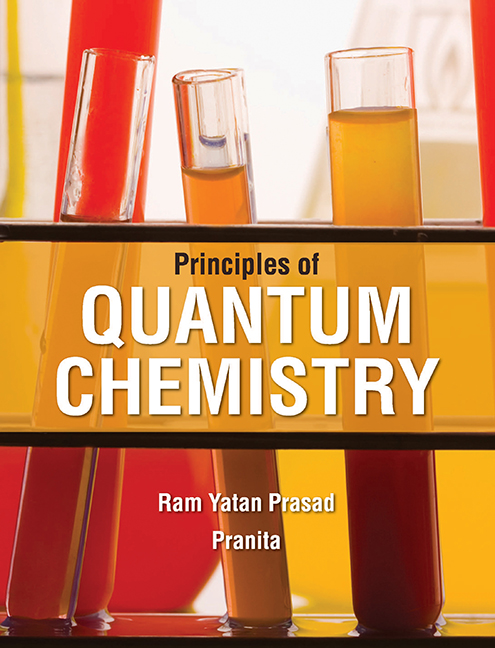Book contents
- Frontmatter
- Dedication
- Contents
- List of Figures
- List of Tables
- Foreword
- Preface
- 1 Quantum Theory
- 2 Wave–Particle Duality
- 3 Mathematical Techniques
- 4 Quantum Mechanical Operators
- 5 Postulates of Quantum Mechanics
- 6 The Schrödinger Equation
- 7 Playing with the Schrödinger Equation
- 8 Hydrogen Atom
- 9 Approximate Methods
- 10 Diatomic Molecules
- 11 Multi-electronic Systems
- 12 Polyatomic Molecules
- 13 Hückel Molecular Orbital Theory/Method
- 14 Density Functional Theory
- Glossary
- Appendix I
- Appendix II
- Appendix III
- Model Question Papers
- Index
Preface
Published online by Cambridge University Press: 02 December 2022
- Frontmatter
- Dedication
- Contents
- List of Figures
- List of Tables
- Foreword
- Preface
- 1 Quantum Theory
- 2 Wave–Particle Duality
- 3 Mathematical Techniques
- 4 Quantum Mechanical Operators
- 5 Postulates of Quantum Mechanics
- 6 The Schrödinger Equation
- 7 Playing with the Schrödinger Equation
- 8 Hydrogen Atom
- 9 Approximate Methods
- 10 Diatomic Molecules
- 11 Multi-electronic Systems
- 12 Polyatomic Molecules
- 13 Hückel Molecular Orbital Theory/Method
- 14 Density Functional Theory
- Glossary
- Appendix I
- Appendix II
- Appendix III
- Model Question Papers
- Index
Summary
This book is based on the latest syllabi of Indian universities and it is intended for honours and postgraduate students of chemistry, physics and engineering. It begins with black-body radiation and ends with a chapter that discusses Hohenberg–Kohn theorem, Kohn–Sham energy and Kohn–Sham equations along with local density approximation and its applications. Density functional theory is a tool of computational chemistry useful for calculations of atomic and molecular properties. Two special topics (Chapters 3 and 4) are added in the book to provide mathematical foundation of quantum mechanics and quantum chemistry. All important topics are comprehensively covered and explained in a lucid manner so that students can obtain an overall concept of Quantum Chemistry. Solved problems are rightly given in the end of each chapter for self-assessment. Some special questions on concept would help students gain ideas about the related topics. These questions will also help them take preparations for various competitive examinations.
We owe special thanks to Bharat Ratna Professor C.N.R. Rao for kindly writing the foreword for this book. We also express our sincere thanks to Padma Shri Professor J.A.K. Tareen, Vice-Chancellor BSAR University and Dr A.A. Bhalekar, Emeritus Professor of Chemistry, Nagpur University, for their constant suggestions while writing the book. Our thanks are also due to Dr K.K. Nag, former Vice- Chancellor of T.M. Bhagalpur University, Ranchi University and V.B. University for his affection and encouragement.
The insightful discussions the authors had with Dr Awadh Prasad, Head, P.G. Department of Physics, SKMU, Dr A.K. Ghosh, Head, Department of Chemistry, Patna University, Dr R.K. Mehra, University Professor of Chemistry, Commerce P.G. College, Patna should also be sincerely acknowledged here. Their suggestions were a great source of inspiration for us. We are also grateful to Manish Choudhary and Sana Bhanot, both editors at Cambridge University Press, India, for their support and enthusiasm to improve this book at every stage of publication.
- Type
- Chapter
- Information
- Principles of Quantum Chemistry , pp. xix - xxPublisher: Foundation BooksPrint publication year: 2014

